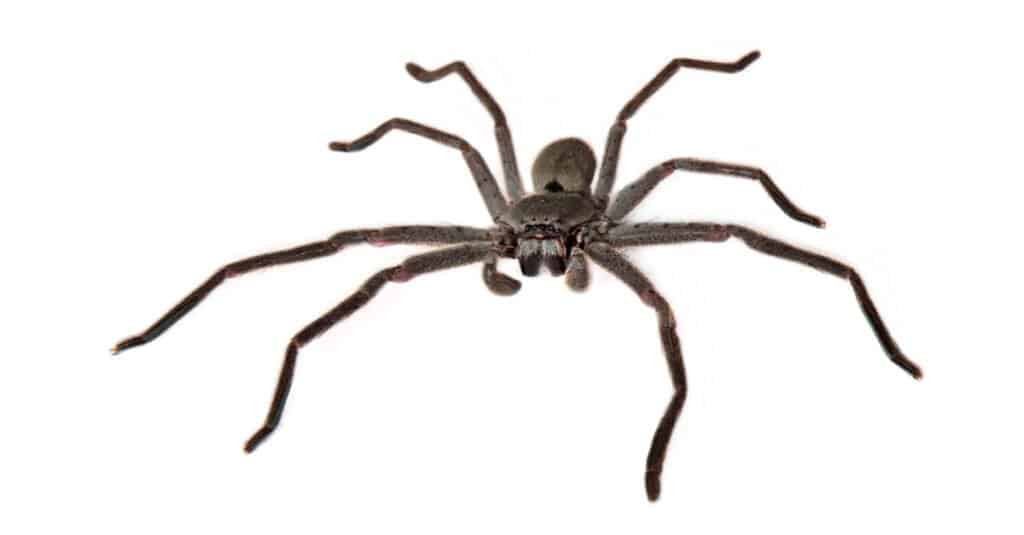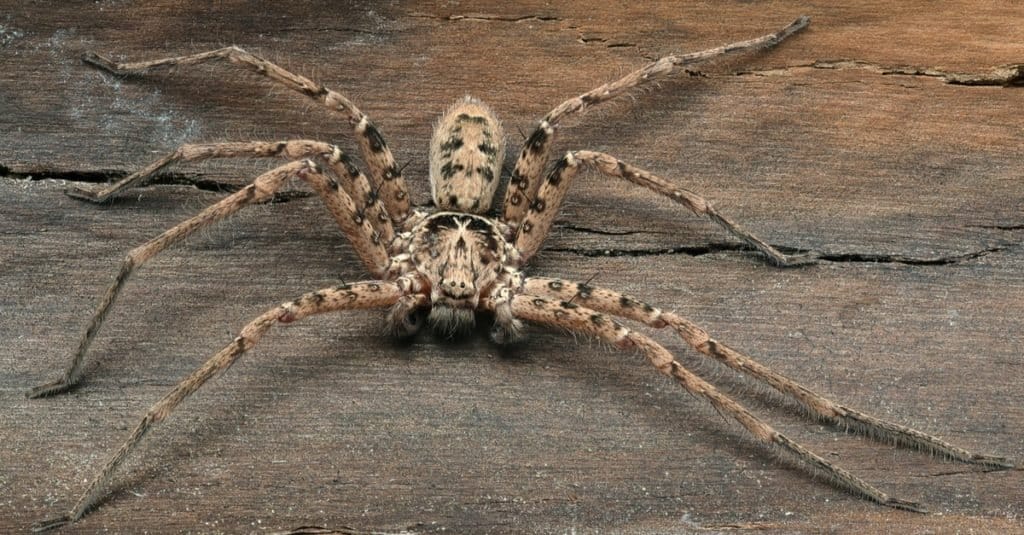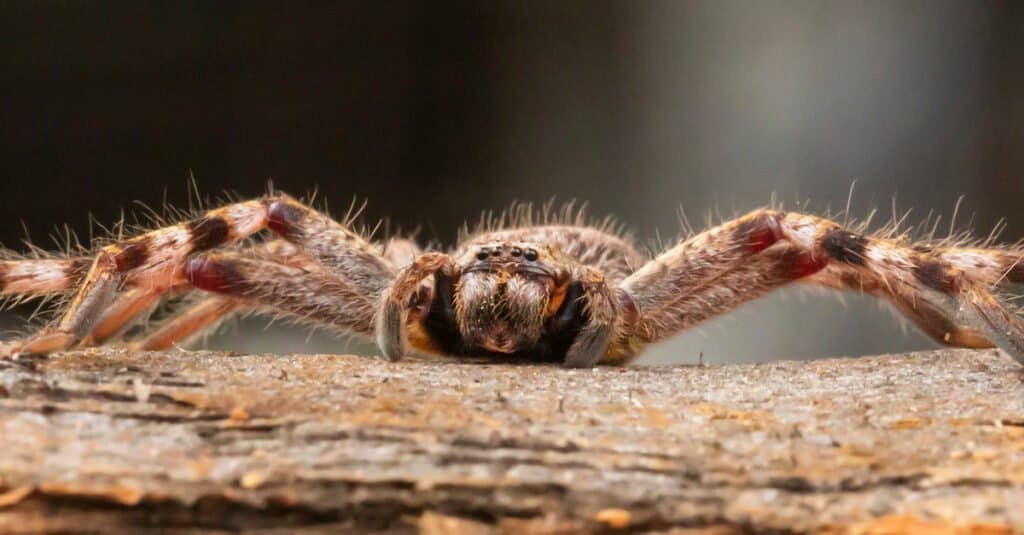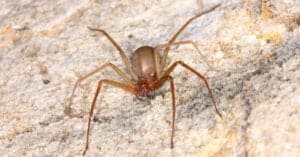Huntsman spiders, also known as Sparassidae spiders, are particularly huge and fast. These spiders are prevalent in Australia and can be found in other parts of the world. Here, we’ll talk about the temperament and hunting techniques of the huntsman spider, in addition to its size. We’ll also discuss everything you might not know about these fascinating spiders!
What Does the Huntsman Spider Look Like?

Huntsman spiders come in many sizes depending on their type.
©John McQueen/Shutterstock.com
Huntsman spiders come in a wide range of sizes. The typical size of a huntsman spider is 1 inch body length with a maximum leg span of roughly 5 inches. Nonetheless, there are huntsman spiders that may grow much bigger than this, with a 1.6-inch body length and a 12-inch leg span! The size of a huntsman spider, while often quite large, can vary widely from species to species and even from specimen to specimen.
Characteristics of the Huntsman Spider
Appearance
The long, thin legs of a huntsman spider give it the ability to move quickly in spite of its huge, flattened body. Their eyes are set up in two rows of four, and their bodies are divided into a head and torso. They come in a wide range of shades from brown to gray, but they are the most common. Species may be easily identified by their outward markings. The huntsman spider is a terrifying species due to its size and appearance.
Temperament
Despite their large size and imposing look, huntsman spiders are often relatively tame compared to other spider species. Some huntsman spider species are even known to be gregarious, engaging in elaborate courtship rituals before mating. Nonetheless, female huntsman spiders can become far more dangerous when they are guarding their egg sacs or offspring. Even though huntsman spiders might not be as lethal as some people fear, it’s best to exercise caution and respect around them, nonetheless.
Where Does the Huntsman Spider Live?

The world’s biggest spider, the giant huntsman, is not harmful to humans, but will bite if provoked.
©iSKYDANCER/Shutterstock.com
Huntsman spiders can be discovered in a wide variety of environments, from the tropics to warm temperate zones and everything in between. Under loose tree bark, within hollow logs, beneath rocks and bark slabs on the ground, and even on the walls of homes, you can find these critters all around Australia. Huntsman spiders are widespread, with some species even inhabiting the Mediterranean, Florida, and Hawaii. The huntsman spider is able to survive and even thrive in many diverse settings.
Where Do Huntsman Spiders Look for Prey?
Huntsman spiders are able to successfully capture prey thanks to their swiftness, agility, and keen vision. They don’t use webs to catch insects like most spiders do. They calmly wait for their prey to approach before pouncing on it. Injecting venom into their victim with their powerful jaws and fangs is how they kill or immobilize it. Huntsman spiders utilize their sharp mouthparts to gnaw and dismember their prey once it has been rendered immobile. In general, huntsman spiders are expert predators that can thrive in many diverse ecosystems.
Can You Get Bitten by a Huntsman Spider?

If a huntsman spider bites, it typically only causes mild to moderate localized pain and irritation.
©Wright Out There/Shutterstock.com
Huntsman spiders do have venom; however, it is not thought to be very harmful to humans. Most online resources agree that huntsman spider bites are not dangerous to humans and typically don’t cause severe symptoms. Bites may be uncomfortable and lead to some redness and swelling at the bite site, but these symptoms typically go away on their own after a few days. It’s possible that some people will have an allergic reaction to their venom, and in extremely unusual circumstances, consequences like infection or necrosis could arise as a result. Huntsman spiders, like all other types of spiders, should be approached with caution and respect.
Is There Anything Unexpected About Huntsman Spiders?
A lot of what we know about huntsman spiders is new and unexpected. Some examples:
- Huntsman spiders are able to change colors to blend in with their surroundings, which can help them avoid detection by predators or prey.
- Male huntsman spiders often use elaborate courtship displays to attract mates, such as dancing, drumming their legs, or presenting a gift of food.
- Huntsman spiders are incredibly fast and agile and can run at speeds of up to 1 meter per second.
- Despite their large size and fearsome appearance, huntsman spiders are generally quite docile and are not considered to be highly dangerous to humans.
Overall, huntsman spiders are fascinating creatures that are well-adapted to surviving in a variety of different environments.
Thank you for reading! Have some feedback for us? Contact the AZ Animals editorial team.








